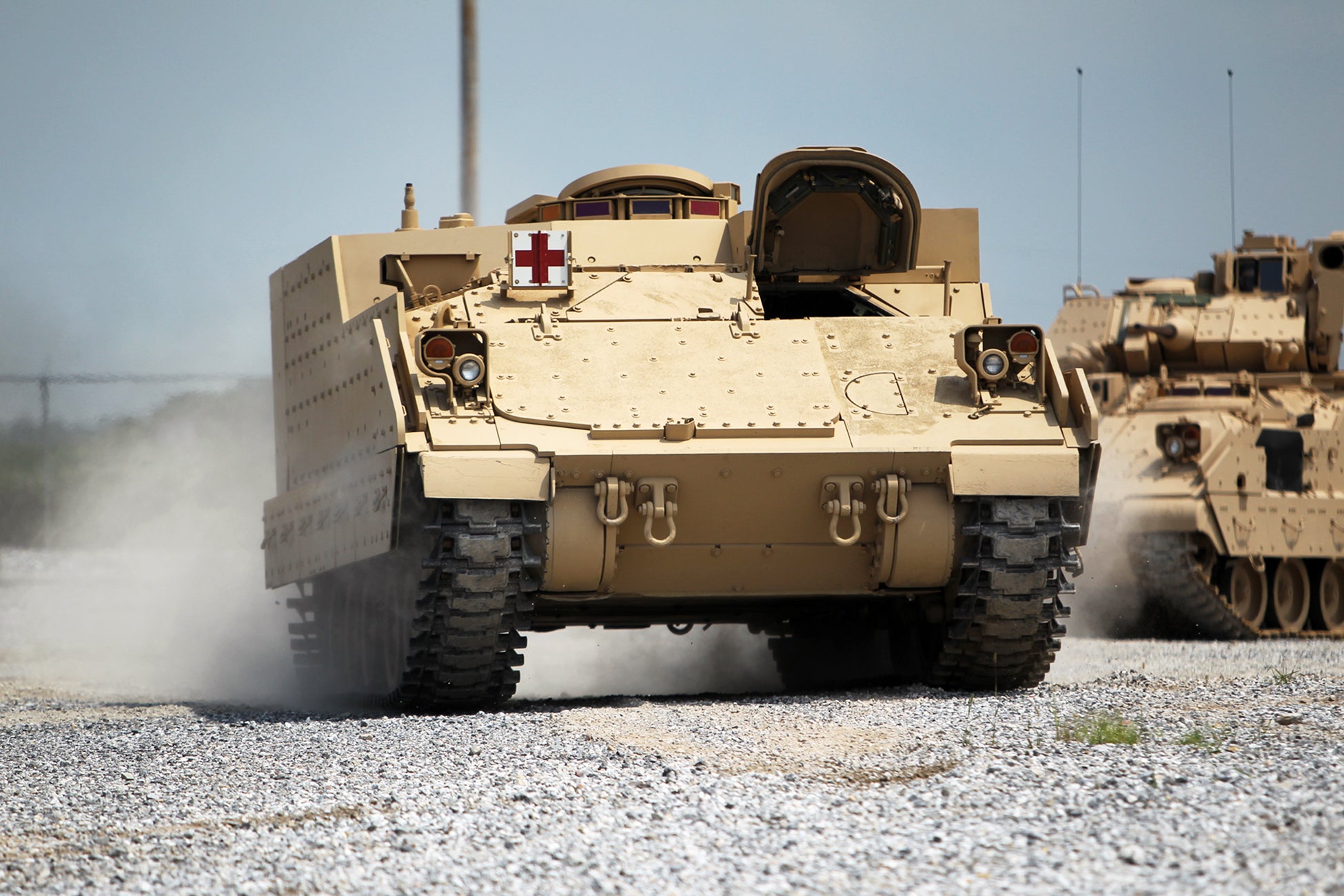New AMPV provides soldiers more size, power, cooling, mobility
New AMPV provides soldiers more size, power, cooling, mobility
The first armored multi-purpose vehicle (AMPV) has rolled off the production line in York, Pa.
The AMPV will replace the Army’s aging M113 family of vehicles that today make up 32 percent of the armored brigade combat team vehicle fleet, said Col. Mike Milner, project manager, AMPV, during the rollout ceremony. The M113 was first produced in 1960.
Capabilities
Milner said AMPV will provide significantly more size, power, cooling and mobility than the M113 to the armored brigade combat teams.
“[The AMPV] will enable mission command on the move, restore indirect fires for the combined arms battalions, provide protection and survivability to the company’s logistical forces and provide significantly greater care to wounded soldiers than was previously available,” Milner said.
“All of this while providing protection and survivability levels well above the capabilities in the field today.”
While pointing out the AMPV on display behind him, Erwin Beiber, president, Platforms and Services, BAE Systems, Inc. – the company that was awarded the contract – said the AMPV will include five variants. The variant on display was the general purpose variant.
Other AMPV variants currently in various phases of build include:
- Mission command
- Medical treatment
- Medical evacuation
- Mortar carrier
The AMPV will create a tremendous amount of commonality in the fleet, Beiber added.
“When this gets out there with Bradleys, that high degree of commonality will hold down costs in production and full-life-cycle costs, supply, training and troop support to these vehicles and that will be absolutely fantastic,” he said.
On time, on budget
The first prototype of AMPV was rolled out just shy of 24 months after the contract was awarded. This is a significant short time in Army acquisition programs, Milner said.
The AMPV was rolled out, he noted, on cost and on schedule, fewer than six months after its critical design review.
“There are so few programs today that have delivered prototypes this quickly,” he said. “[Now] we can get it into test and eventually into production.”
Beiber attributed the quick turnaround, in part, to the fact that the AMPV is built on prior programs like the Bradley and Paladin Integrated Management program.
Bringing a lot of that mature technology to this program, he said, “significantly de-risked the timeline to execute.”
Maj. Gen. David G. Bassett, program executive officer for Ground Combat Systems, credited the Army chief of staff, Gen. Mark A. Milley with keeping the program moving forward.
“His personal involvement has prevented this program from falling into the trap that’s caught other programs and caused them not to succeed,” he said.
Adding, “[Milley has] ensured we’ve stayed aligned with his priorities, to deliver the appropriate combination of protection, mobility, reliability … on budget and on schedule.”
Bassett said, “This is not the finish line. The last thing we want to do is celebrate too soon, like Navy did” near the end of the recent Army-Navy game in Baltimore where the Army was triumphant.
“We’re not going to rest,” he said. “We’re going to be relentless until we deliver AMPVs across every armored brigade combat team (ABCT) in the Army. Our soldiers deserve nothing less.”
He concluded: “The [ABCT] is not the kind of formation you send out when you want to put up a school, hand out bags of rice or build a road. It’s for dominating our nation’s adversaries. It is our most lethal formation. There are no more lethal formations on the ground today in the world than a U.S. Army ABCT. This vehicle … will make this ABCT even stronger.”


